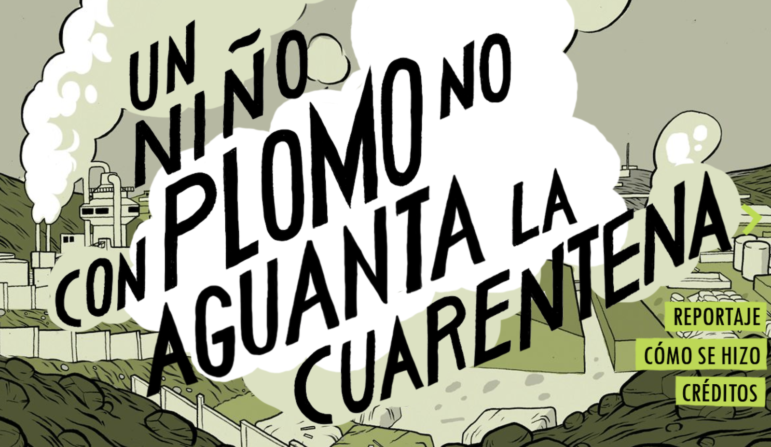

Demonstrators marching in protest of Peruvian President Dina Boluarte, who might have the final say over a controversial new bill that would greatly hamper investigative journalism in that country. Image: Shutterstock
Editors and Reporters Denounce Bill That Would Upend Investigative Journalism in Peru
Read this article in
Investigative reporters in Peru have dug into a number of blockbuster stories in recent years: from deep dives into corruption to exposés on nepotism, reports on the cross border Lava Jato scandal to investigations into political violence.
At each turn during a series of recent crises — and with six presidents in the last 10 years, there have been many — the investigative corps have helped their audiences understand what is happening, what is at stake, and who stands to benefit.
But according to press freedom organizations and leading reporters and editors interviewed by GIJN for this piece, a new bill could seriously impact their ability to work on in-depth investigative projects.
The bill — dubbed the Ley Mordaza in Peru — has passed its first reading in Congress. If it passes its second reading, the proposal will move to President Dina Boluarte’s desk to enact or review.
The bill increases the penalties for slander and libel, and dictates stricter timeframes for corrections. Among the measures are penalties of up to five years in prison, fines, and civil damages for those who commit libel and slander; a restriction in the amount of time outlets have to make a correction, from seven days to 24 hours; and a measure that suggests disseminating information that affects personal privacy could be considered for libel.
If enacted, it would “severely harm press freedom in the country,” according to the Committee to Protect Journalists, which together with the Inter American Press Association (IAPA), Peru’s National Radio and Television Society, the Peruvian Press Council, and the National Association of Journalists of Peru issued a joint statement warning of the impact.
The legislation, they warn, is “clearly aimed at impeding journalists and communicators” in “clear violation of the principles of freedom of expression and information.”
And it is not the first time the press in Peru has come under attack. The country has fallen sharply down the rankings of the Reporters Without Borders (RSF) World Press Freedom Index. It currently sits in 125th position — out of 180 countries — dropping 48 places in two years amid warnings of “journalists facing mounting pressure from the state.”
Reporters have also been injured while covering social protests, a number have faced judicial proceedings linked to their work, while others have faced digital harassment, and attacks by far-right groups.
Journalists Raise the Alarm
In recent years, investigative journalism in Peru has taken refuge in digital media outlets, where reporters have uncovered major cases of corruption involving the authorities. Journalists consulted by GIJN agreed that if the bill passes a second Congressional vote — and if President Boluarte’s government enacts it — they would no longer be able to conduct this type of coverage.
Journalist Gustavo Gorriti, the director of IDL-Reporteros, has suffered judicial persecution and online harassment for his investigations on corruption, but he still considers this bill to be an extreme attempt to control and stifle journalism through regulations. “It is aimed not only at repressing and controlling the press, but also at eliminating independent investigative journalism,” he states.
In Gorriti’s opinion, if this law is approved, reporters would not be able to carry out major investigations like those conducted by IDL-Reporteros on the Lava Jato case, which exposed the immense web of corruption at the highest levels of the Peruvian state and private enterprise. Journalists working on a similar story after a bill like this was in place, he said, would be repressed and their media outlets could even be shut down.
For David Hidalgo, the director of OjoPúblico, this bill is part of a series of recent initiatives by the authorities that impact journalism. “There is an intention in certain political sectors to counteract the impact of journalistic investigations on sensitive topics involving everything from corruption cases to conflicts of interest,” he says.
Hidalgo warned that if the law is enacted, his team would not be able to carry out investigations like those recently published by OjoPúblico on the hiring, in state institutions, of the relatives of high-ranking public officials. Such work would be impossible, he says, because those involved could argue that their privacy is being violated.

Journalism unions have warned against measures that could restrict press freedom. Image: Courtesy of the ANP Archive
According to Fabiola Torres, founder and director of Salud con Lupa, the proposed tougher penalties for libel and slander weaken the conditions for practicing investigative journalism, establishing a mechanism in which reporters can be pressured, which inhibits critical journalism. “It is a huge setback. The risk of imprisonment or disproportionate civil reparations becomes a clear disincentive to investigate the powers that be,” she points out.
Torres recalled an investigation published by Salud con Lupa on the irregular food purchases made by the municipality of Lima to supply the most vulnerable populations in the capital. The mayor of Lima publicly threatened to sue them for libel. If this bill had been in place, she says, he would have had more tools to pressure them.
Daniel Yovera, journalist of Epicentro TV, warns that if the bill becomes law, it could intimidate some journalists and media outlets which, to avoid a lawsuit, would agree to the demands of an “express” correction. If they do not agree, they could be taken to court. “In the event of unfavorable court rulings journalists could lose their freedom, if they are convicted, part of their assets, because they would have to pay civil reparations, and their credibility,” he explains.
Every year, an average of 30 to 35 journalists in Peru are taken to court, and 150 cases have been recorded in the last five years, according to Zuliana Lainez, president of the country’s National Association of Journalists (ANP).
She warns that if this bill becomes law, journalists could receive prison sentences for libel and slander and “the threat of self-censorship will be on the table.”
Lainez fears that the “violation of personal privacy” concept will hinder journalists’ ability to disseminate information of public interest about government officials. As an example, she cited one investigation into President Boluarte undergoing cosmetic surgery, and allegedly failing to notify Congress that she would be absent. The president was forced to deliver a message to the nation in which she said had undergone surgery on her nose for health reasons — but according to Lainez, these are exactly the kind of public interest stories where officials could also claim that their privacy is being violated.
For Adriana León, journalist and director of the Freedom of Information section of the Press and Society Institute (IPYS Peru), this bill would without doubt affect journalism, especially investigative journalism. “It is so restrictive regarding rectification that it doesn’t tolerate opinions, nor political humor,” she warns.
A recent media investigation into the luxury watches worn by President Dina Boluarte — a scandal dubbed “Rolexgate” — would not have been possible, emphasizes León of IPYS, because the public officials involved in this case could use the new provisions in the law to file complaints against journalists.
“The threat of jail time and large fines is serious at a time when the media are going through a tremendous crisis, have very few resources, and little ability to hire lawyers,” she warns.
What Can Be Done?
León noted that this bill in Peru closely resembles the media law passed in 2013 by President Rafael Correa’s government in Ecuador regarding corrections, which was amended in 2018.
Recalling the scope of this law in Ecuador, César Ricaurte, the director of the Andean Foundation for Media Observation and Study (Fundamedios), said that it restricted the work of the press because the government invoked the right of reply and correction to impose content. “Control and censorship were not only exercised over information but also over opinion columns and even cartoons,” he says.
Following the reforms of the law, major journalistic investigations into corruption during Correa’s administration began to appear.
Threats to press freedom are linked to a decline in democracy in the region, according to Cristina Zahar, Latin America program coordinator for the Committee to Protect Journalists (CPJ). She highlights that in Peru, as well as in Ecuador, Bolivia, Paraguay, and other Latin American countries, there is a stigmatizing discourse against the press and journalists that comes from the top. Laws like this, she says, only serve to make the situation worse.
“If this bill passes, it will affect the freedom of journalists and media to investigate power and conduct public interest investigations,” cautions Zahar.
The Peruvian Congress has yet to set a date for the second vote on this bill, and Gustavo Gorriti of IDL-Reporteros, says now is not the time to give in. He proposes confronting, revealing, exposing, denouncing, continuing to investigate, continuing to publish, and, if the bill is passed, trying to find means to reduce its destructive impact. Daniel Yovera, of Epicentro TV, shares a similar view, urging journalists to not only to fight against the bill but also to continue investigating with greater rigor and care.
Fabiola Torres, from Salud con Lupa, says reporters need to raise awareness of the risks of this bill, not only for journalists, but for all citizens. “When the ability to investigate and report irregularities is restricted, those who lose the most are the people who depend on public services, who live in vulnerable conditions,” she adds.
David Hidalgo, of OjoPúblico, says that if the bill passes, journalists should be prepared with legal strategies formulated with the advice of lawyers — but warns that many independent organizations lack access to adequate legal defense. “These are costly processes that can seriously affect the sustainability of journalistic organizations,” he adds.
 Elena Miranda is a Peruvian journalist based in Lima. She collaborates with digital media outlets doing investigative journalism and data analysis. She has worked for the portal Convoca and the newspapers Correo, Ojo, Perú 21, Liberación, and La República.
Elena Miranda is a Peruvian journalist based in Lima. She collaborates with digital media outlets doing investigative journalism and data analysis. She has worked for the portal Convoca and the newspapers Correo, Ojo, Perú 21, Liberación, and La República.









